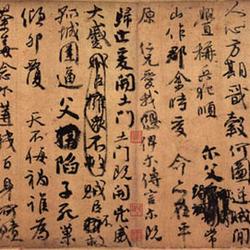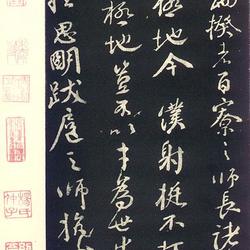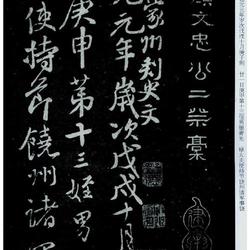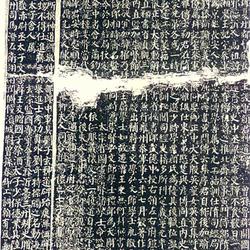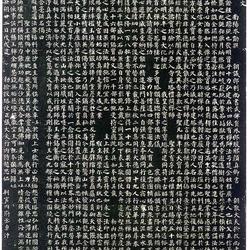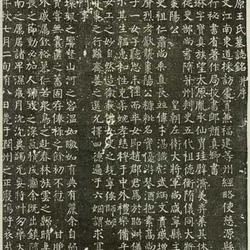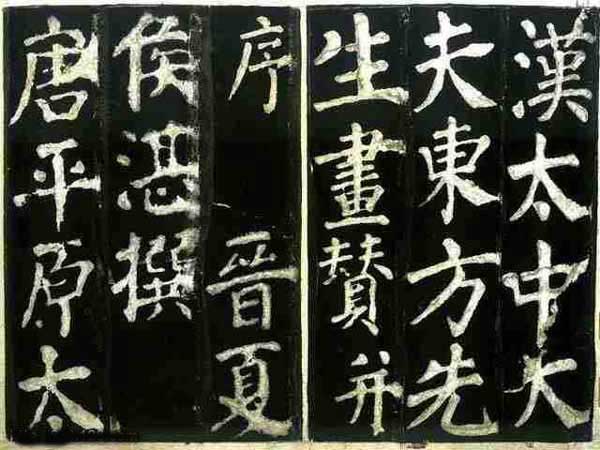
The full name is "The Monument of Paintings and Praises by Mr. Dongfang, the Taizhong Doctor of the Han Dynasty". It was established in December of the 13th year of Tianbao (754 years). Xia Hou Zhanwen of Jin Dynasty, Yan Zhenqing's regular script, and the yang forehead of the stele are his seal script. The inscription on the stele is written by Yan Zhenqing in regular script, and the forehead is written in official script. 340×151.6 cm. Engraved on all sides. There are 15 lines each on the yang and yin side of the stele, and 3 lines on each side of the stele, with 30 characters on each line. The monument is in Dongling County, Shandong Province, and the rubbings are in the Palace Museum, Beijing.
In the eighth year of Kaiyuan of the Tang Dynasty (720), Han Sifu, the governor of Dezhou, once erected an inscription stone in front of the Dongfang Shuo Temple. In the thirteenth year of Tianbao (754 years), Yan Zhenqing went out to guard the plains. In the winter, Hebei's envoy to Dongping, An Lushan, ordered the imperial censor Shi Pinglie, supervisory censor Yan Kuan, Li Shiyu, Youjin Wuzhou, Cao Songjian and others to patrol the county in order to explore the real situation of the Yan family. Yan Zhenqing went on a tour with them. This temple. Seeing that the inscription on the stele was worn out, I sighed with emotion, but still wrote it carefully, published it in stone, and wrote a note on the stele to express my admiration for Mr. Dongfang. When the carving was completed, it coincided with the Anlu Mountain rebellion, and the stone carvings were hidden in the soil. More than ten years later, Wu Zichao, the farewell driver, stood up in front of the temple.
Yan Zhenqing was 46 years old when he wrote this monument. He was in the prime of life, full of energy and vitality, and was cherished by future generations.
Exquisite rubbings of this stele are rarely seen. The rubbings from the Song Dynasty have very few gouges, and the damaged characters can be discerned. The characters "颉" on the top left of the "颉〓" on the stele and the characters "颃" are not damaged. The character " " in "Taeksi borrows power" has not been cut out into "gui". The word "Kyoto" is not very damaged. The word "turbid" in "it is both turbid and can be made clear" is not damaged. The two characters "Langxie" on the back of the stele are not damaged. In the late Ming Dynasty, the character " " was cut out into "gui". Due to the poor quality of the stele, the stone peeled off more and more over time, especially in the lower part of the stele, and many characters were almost unreadable. There are reprints, some of which are excellent.

